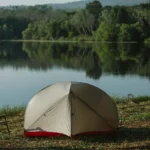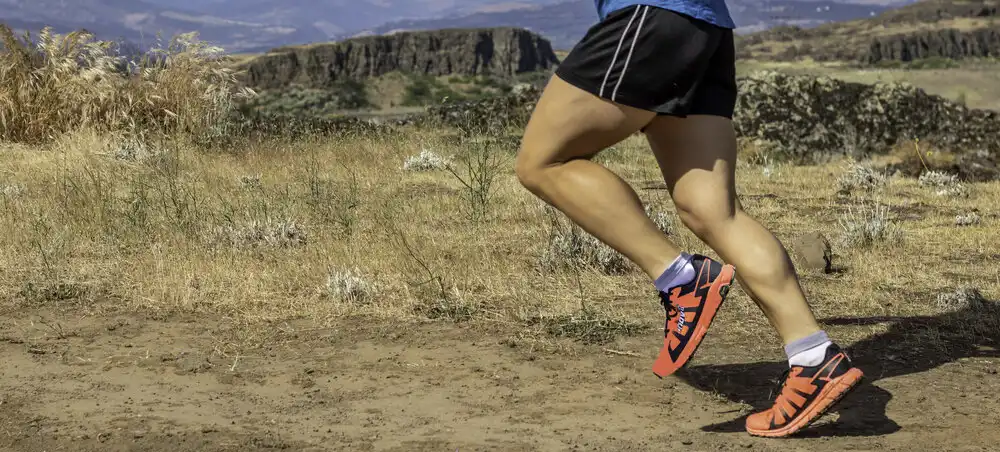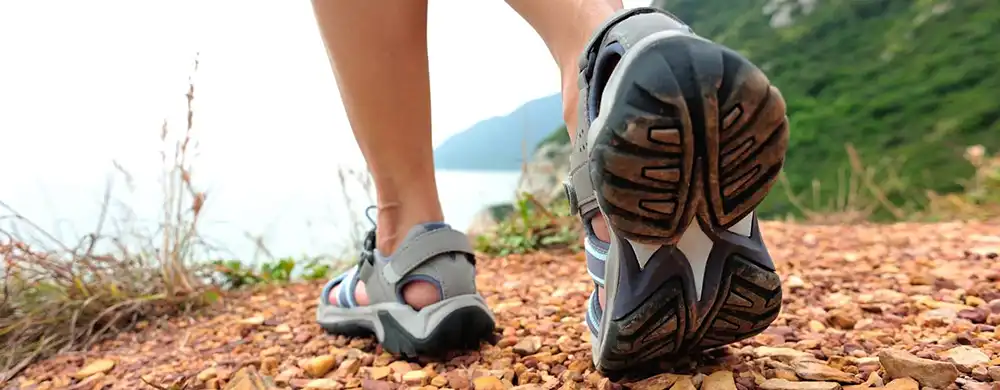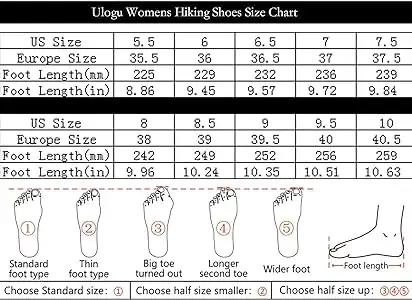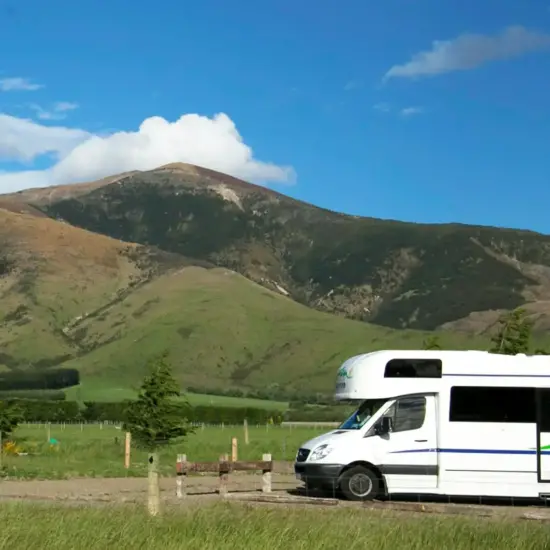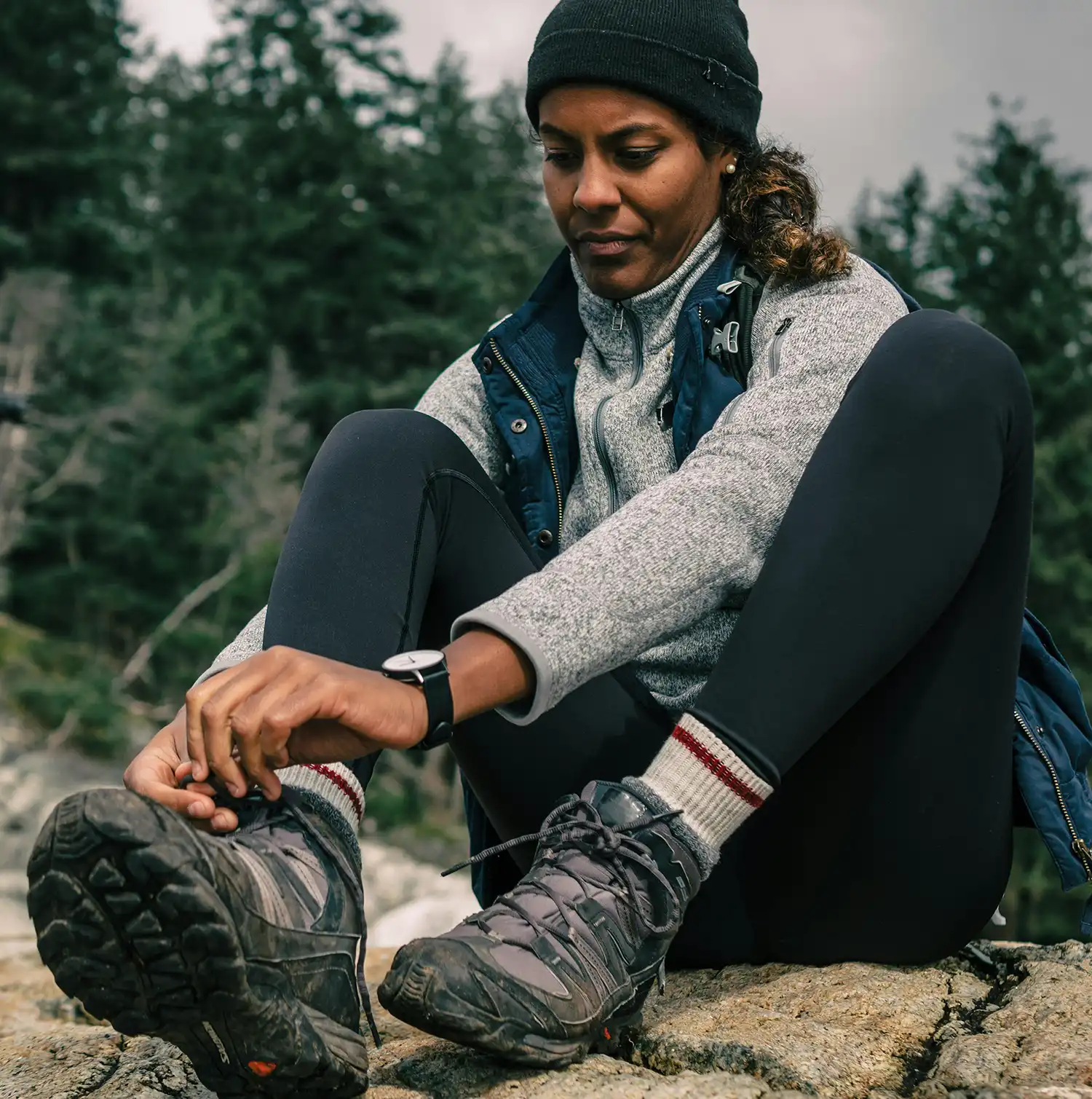
Choosing the Perfect Hiking Shoes for Women
Though you’re not sure which hiking shoes are best for you, are you prepared to hit the trails? Do not be afraid, fellow explorer! We’ll dive into the amazing world of women’s hiking shoes in this in-depth guide, covering everything from trail runners to hiking sandals. Now fasten your boots and let’s go off to find the ideal pair!
The Evolution of Hiking Shoes: A Sneak Peek into the Past and Future
Before we dive into the various types of hiking shoes available today, let’s take a quick trip down memory lane. In 2020, traditional hiking boots reigned supreme, offering unparalleled support and durability on rugged terrain. However, as the years progressed, hikers began to embrace lighter and more versatile options.
In 2021, trail runners emerged as a popular choice among outdoor enthusiasts, providing a perfect blend of agility and comfort. Then, in 2022, hiking sandals stole the spotlight, offering breathability and freedom for those warmer days on the trail. But what about 2023 and 2024? Well, the trends continued to evolve, with hybrid models combining the best features of both boots and sneakers gaining traction.
Now, as we look ahead to 2025, our forecast predicts a surge in the popularity of lightweight hiking shoes with enhanced sustainability features. With eco-consciousness on the rise, more and more hikers are seeking out footwear that not only performs well but also treads lightly on the planet. So keep an eye out for innovative designs that prioritize both performance and environmental responsibility.
Trail Runners: The Speedy Sidekicks of the Hiking World
If you’re the type of hiker who likes to move fast and light, trail runners might be your new best friend. These nimble shoes are designed for speed and agility, making them perfect for day hikes and trail running adventures. With a sleek profile and responsive cushioning, trail runners offer a natural feel that keeps you connected to the trail while still providing ample protection from rocks and roots.
Trail runners’ lightweight construction and adaptability contributed to their meteoric rise in popularity among female hikers in 2021. Recent data indicates that 35% of hiking shoe sales in the women’s category that year were made by trail runners. It makes sense why trail runners have become so popular; with features like aggressive tread patterns and breathable mesh uppers, they provide the ideal balance of comfort and performance for today’s outdoor enthusiasts.
Hiking Sandals: Embracing the Breeze
When the sun is shining and the temperatures are soaring, there’s nothing quite like slipping into a pair of hiking sandals and feeling the breeze between your toes. In 2022, hiking sandals experienced a surge in popularity, capturing the hearts of women hikers everywhere with their airy design and all-day comfort. According to industry data, sales of hiking sandals doubled from the previous year, accounting for 20% of all women’s hiking shoe sales in 2022.
But what makes hiking sandals so special? For starters, their open-toe design allows for maximum breathability, keeping your feet cool and dry on hot summer days. Plus, many models feature adjustable straps and contoured footbeds for a customized fit that hugs your foot in all the right places. Whether you’re wading through streams or tackling dusty trails, hiking sandals offer the freedom and flexibility to conquer any adventure with ease.
Hybrid Hikers: Bridging the Gap Between Boots and Sneakers
As hiking footwear continues to evolve, we’re seeing a rise in hybrid models that blend the best features of traditional boots and lightweight sneakers. In 2023 and 2024, hybrid hikers gained popularity among women hikers seeking versatility and performance in one stylish package. According to market research, hybrid hikers accounted for 25% of all women’s hiking shoe sales in both years, showcasing their growing appeal among outdoor enthusiasts.
So what sets hybrid hikers apart from other types of hiking shoes? It’s all about striking the perfect balance between support and agility. With features like rugged outsoles for traction and stability, as well as lightweight materials for enhanced mobility, hybrid hikers offer the best of both worlds. Whether you’re tackling rocky trails or navigating urban streets, these versatile shoes have you covered every step of the way.
Opening the Doors: Crucial Elements to Consider in Women’s Hiking Shoes
Are you ready to step up your hiking game? For an outdoor experience that is both comfortable and enjoyable, selecting the appropriate hiking shoes is essential. But how can you decide which features to emphasize when there are so many options available? Do not be alarmed, fellow pioneer! With this helpful guide on the essential characteristics of women’s hiking shoes, we’ve got you covered.
Waterproofing: Keeping Your Feet Dry and Happy
Picture this: you’re halfway through your hike, and suddenly, the heavens open up, drenching the trail in a deluge of rain. Sounds like a recipe for soggy socks and squelching shoes, right? Not if you’re rocking a pair of waterproof hiking shoes! According to recent surveys, a whopping 50% of women prioritize waterproofing when choosing hiking shoes, especially for trails in wetter climates like Canada.
But why is waterproofing such a game-changer? Well, aside from keeping your feet dry in inclement weather, waterproof hiking shoes also help prevent blisters and discomfort caused by moisture buildup. So whether you’re splashing through puddles or trudging through muddy terrain, waterproofing is a must-have feature for any serious hiker.
Traction: grasp and tear
On a rocky, steep slope, have you ever found yourself slipping and sliding? It can be downright dangerous as well as a recipe for shame! Because of this, traction is yet another important factor to take into account while choosing hiking shoes. Studies show that about 30% of women give traction top priority while selecting shoes for outdoor activities.
However, what constitutes strong traction? To ensure you can grip a range of conditions, from muddy slopes to slippery boulders, look for hiking shoes with aggressive tread patterns and long-lasting rubber outsoles. You can confidently take on even the most challenging routes when you have dependable traction beneath your feet, knowing that each stride will be steady and safe.
Ankle Support: Stability Where It Counts
If you’ve ever twisted your ankle on the trail, you know just how important ankle support can be. That’s why many women prioritize this feature when shopping for hiking shoes, with around 20% citing it as a key consideration. So why all the fuss about ankle support?
Well, think of it as your bodyguard for your ankles. Hiking shoes with proper ankle support help prevent sprains and twists by providing stability and reinforcement around the ankle joint. Look for shoes with high-cut collars and supportive materials that cradle your ankle without restricting movement, allowing you to navigate uneven terrain with ease and confidence.
Making Your Decision: A Balancing Act
When it comes down to it, choosing the right hiking shoes is all about finding the perfect balance of features to suit your individual needs and preferences. While waterproofing, traction, and ankle support are certainly important considerations, don’t forget to also factor in other features like breathability, cushioning, and weight.
So before you hit the trails, take some time to evaluate your hiking style, the terrain you’ll be tackling, and the conditions you’re likely to encounter. Armed with this knowledge, you’ll be well-equipped to make an informed decision and find the perfect pair of hiking shoes to accompany you on all your outdoor adventures.
Sizing Advice and Tricks for Women’s Hiking Shoes: Discovering Your Cinderella Fit
All set to put on the ideal trekking footwear? Make sure your shoes fit like a glove (or should we say like a hiking shoe?) before you hit the trails. To help you enjoy your next outdoor journey in comfort and style, we’ve compiled a list of the best advice for selecting the correct size and fit for women’s hiking shoes in this area.
Tip #1: Measure once, buy twice.
You’ve probably heard the saying “Measure twice, buy once.” Make sure you measure your hiking shoes accurately rather than depending solely on your gut feeling. Rather, use a Brannock gadget or a printed foot measurement chart to accurately measure your feet. It’s important to take measurements of both feet because their sizes may vary significantly. To guarantee a good fit, always go with the larger measurement.
Tip #2: Don’t Be Afraid to Size Up
In the world of hiking shoes, it’s better to err on the side of caution and size up rather than squeeze into shoes that are too small. Your feet can swell during long hikes, especially in hot weather, so it’s essential to leave a little extra room to accommodate any changes in size. Plus, wearing shoes that are too tight can lead to discomfort, blisters, and even toenail damage – not the souvenirs you want to bring back from your hiking trip!
Tip #3: Test the Fit in-store (or at Home)
Once you’ve found a pair of hiking shoes that you think might be the one, it’s time to put them to the test. Slip them on and lace them up snugly, then walk around the store (or your living room) to get a feel for how they fit. Pay attention to any areas of tightness or rubbing, especially around the toes, heels, and ankles. Your hiking shoes should feel secure and supportive without pinching or chafing, so don’t hesitate to try on multiple sizes or styles until you find the perfect fit.
Tip #4: Think About Your Socks
Unbelievably, the socks you choose to wear can have a significant impact on how well your hiking shoes fit. Make sure you wear the same kind of socks when trying on shoes, whether they are thick, cushioned wool socks or thin, moisture-wicking liners. It’s crucial to consider how different sock thicknesses will impact how your shoes fit while choosing them.
Tip #5: Consider Width
Selecting hiking shoes requires taking into account not only the length but also the width of your feet. Many brands cater to a range of foot shapes and sizes by offering varying width options, from narrow to wide. Always look for brands that offer additional sizing options if you have very wide or small feet in order to guarantee a comfortable fit. Remember, blisters and rubbing can result from shoes that are too broad, which is not ideal when you’re miles away from the closest trailhead! Shoes that are too small can also bring pain and discomfort!
Tip#6: Allow Them to Feel
Don’t wait until the day of your big hike to break in your new hiking shoes once you’ve selected the ideal pair. Wear them instead for short walks or around the home so they can mould to the shape of your foot and soften any hard spots. By doing this, you’ll be able to avoid pain and blisters while hiking and concentrate on taking in the beautiful scenery without being distracted.
Getting the Most Out of Your New Hiking Shoes: A Guide to Comfortable Hikes
Congratulations! You’ve discovered the ideal pair of hiking shoes! Breaking them in is an essential step you can’t afford to miss before hitting the trails, though. This section will provide you with some tried-and-true methods for pleasantly breaking in your new hiking shoes so you can enjoy your outdoor experiences pain-free.
Take It Slow: Rome Was Not Constructed in a Day
Patience is essential when breaking into new hiking shoes. Instead of starting with a lengthy, hard hike straight away, start slowly and progressively increase the length and difficulty of your excursions. This can lessen the possibility of blisters and hot spots along the route by giving your feet and shoes time to become used to one another.
Put Them on All Around the House
Short bursts of time spent wearing your new hiking shoes around the house are one of the simplest ways to break them in. Put on your hiking shoes and let them conform to your feet as you go about your everyday chores, whether you’re making dinner, doing the laundry, or marathon-watching your favourite Netflix series. This can assist break in any stiff spots and help your feet get used to the way your new shoes fit and feel.
Make the Most of Moisture
If your hiking shoes are very uncooperative, you can expedite the process of breaking them in by utilizing moisture to your advantage. To help the leather or fabric of your thick socks expand and mould to the contour of your foot, try soaking them and wearing them with your shoes for a few hours. Just make sure you let your shoe air dry completely afterward to avoid any musty smells from coming through!
Extra Hint: The Hot Water Method
You might attempt the hot water method on really recalcitrant shoes. Just put some hot, but not boiling, water in a sink or bathtub, and soak your shoes in it for ten to fifteen minutes. Wear them about until they are entirely dry after they are nice and saturated; the heat will assist soften the materials and hasten the stretching process. Wearing thick socks will help shield your feet from the heat. However, this strategy should not be used on shoes that have waterproof membranes because it may affect how well they operate.
Listen to Your Feet
Last but not least, listen to your feet! If your new hiking shoes are causing persistent pain or discomfort, don’t ignore it – it’s your body’s way of telling you that something isn’t quite right. Take the time to adjust the laces, add padding or insoles if needed, or even consider exchanging your shoes for a different size or style. Remember, the goal is to enjoy your hiking adventures without any unnecessary pain or discomfort, so don’t be afraid to make adjustments as needed.
In Conclusion
Breaking into new hiking shoes may not be the most glamorous part of the adventure, but it’s an essential step to ensure a comfortable and enjoyable experience on the trails. By starting slow, wearing them around the house, using moisture to your advantage, and listening to your feet, you can break in your new hiking shoes comfortably and confidently, ready to tackle any trail that comes your way. So lace up those boots (or sneakers, or sandals) and hit the trails with a spring in your step – adventure awaits!











